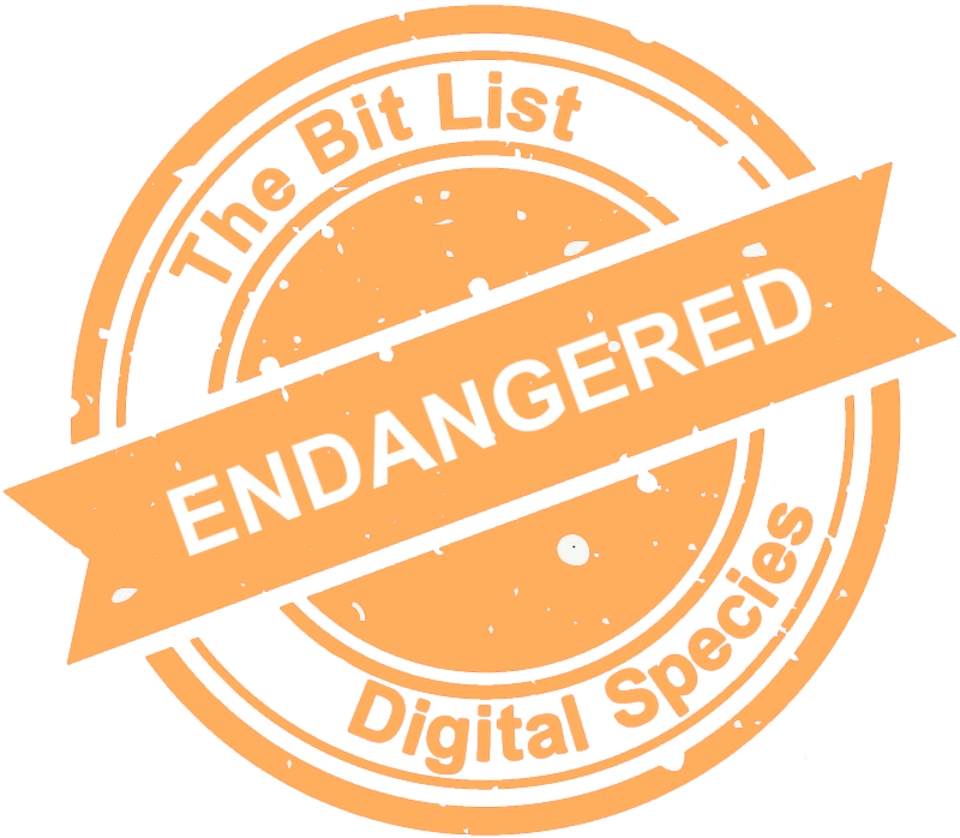Corporate Records of Long Duration on Network Drives, Intranets and EDRMS
 |
||
|
Records on internal corporate network drives, intranets or document management services where access is limited to a distinct group of users, and in which the lifecycle of the record or the business processes they support is greater than the technology on which they are created or retained. |
||
|
Digital Species: Sensitive Data |
Trend in 2023:
|
Consensus Decision |
|
Added to List: 2017 |
Trend in 2024:
|
Previously: Endangered |
|
Imminence of Action Action is recommended within twelve months; detailed assessment is a priority. |
Significance of Loss The loss of tools, data or services within this group would impact on many people and sectors. |
Effort to Preserve | Inevitability It would require a major effort to preserve materials in this group, with the development of new preservation tools or techniques. |
|
Examples Born-digital records of small and medium sized enterprises; fasting-changing internal manuals, advice or policies shared on intranets or EDRMS; records of long-lived products and services; Historic guidelines and manuals which evidence ‘best practice’; Documentation supporting long-lived contractual relations; Online terms and conditions; Corporate Slack channels; Google Drives; EDRMS; Email. |
||
|
‘Critically Endangered’ in the Presence of Aggravating Conditions Lack of systematic preservation function; lack of preservation path or plan for data; dependence on proprietary products or formats; poor management of data protection; political or commercial interference; lack of offline equivalent; over-abundance through poor disposal or naming and version control; lack of capacity; lack of commitment; loss or lack of documentation; sector-specific software or data types; encryption; Uncertainty over IPR or the presence of orphaned works owners. |
||
|
‘Vulnerable’ in the Presence of Good Practice Preservation infrastructure and pathways; replication; appraisal and selection including de-duplication. |
||
|
2023 Review This entry was added in 2017 to draw attention to the pressing need for digital preservation in business, especially in small to medium enterprises. The 2020 Jury noted how the Covid Pandemic has caused profound dislocation across the economy and placed many companies and agencies at financial risk. The likelihood of liquidation, mergers or acquisitions means that these records are trending towards greater risk. The 2021 Jury agreed with the trend towards greater, adding that increased risk is not necessarily because there are no assigned parent archives to take on these materials; rather, it is because they too often sit in these spaces for some time before being transferred to the archives. They are often not well managed or maintained by their creating agencies, putting them at risk of accidental deletion or corruption. There remain increased risks without business continuity and trust. The 2023 Council agreed with the continued Endangered classification with the overall risks remaining on the same basis as before (‘No change’ to trend), though also noting an increased imminence of action needed for this entry and highlighted the importance of processes in the preservation of these records. They recommended that the next review considers rescoping this entry, possibly adding a new entry about covering sensitive data in databases that would fall into both the Sensitive Data and new Databases digital species groups. |
||
|
2024 Interim Review The 2024 Council recommends that a major rescoping of the Sensitive Data species is necessary, with plans to remove it as a species and incorporate key elements and examples to relevant entries for the next 2025 Bit List. This is because it is not clear how sensitive data works as a species, when many of the other species mentioned could have sensitive data concerns, and the sensitivity of the data is more like an extra category of risk that potentially applies across any species. Additionally, further input from those working with corporate records in this context is invited. |
||
|
Additional Comments Corporate records should form part of organizational records management schemes, and so responsibilities should be clear; however, this may be much more challenging for smaller organizations without dedicated roles or with complex data types. Processes become as important as technology when it comes to preserving this kind of material. If an organization does not have good records organization, naming conventions etc. that may make material as vulnerable to loss as technological failure or format obsolescence could. Closer collaboration over the digital record lifecycle with recordkeeping organizations such as IRMS/ARA and digital preservation organizations would help to ensure best practice from (before) record creation to its long-term preservation and would help to identify any risks and bridge gaps ‘from the cradle to the grave’. Joining forces and resources will enable the community to raise awareness of the impact of best practices on the organizational governance and related efficiencies. See also:
|
||









































































































































